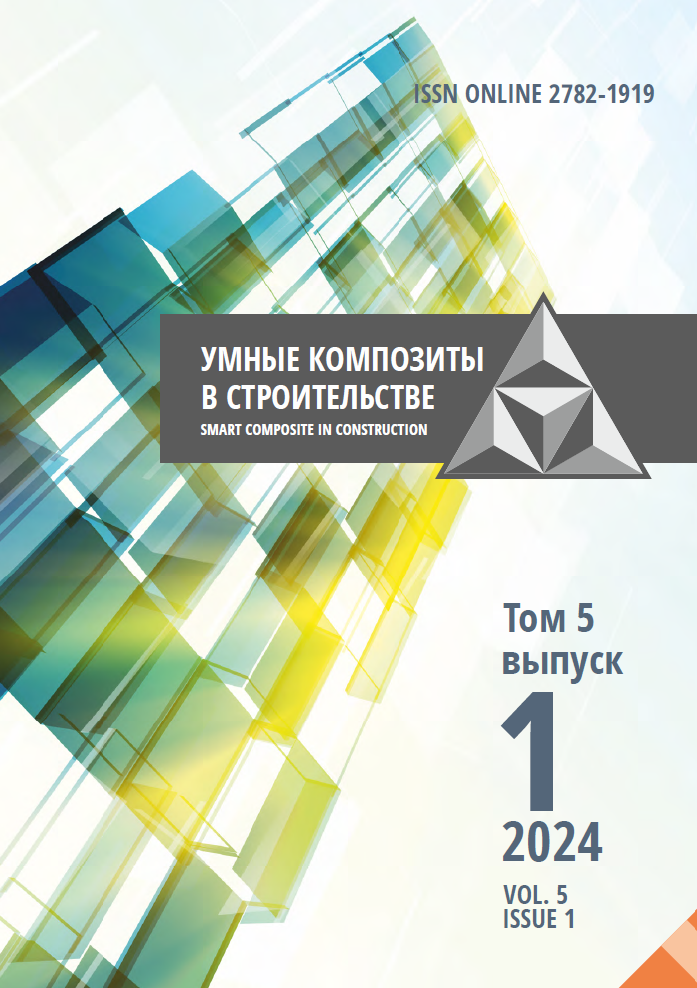Kostroma, Kostroma, Russian Federation
Kostroma state University (Department of logging and wood processing industries, department chair)
from 01.01.2016 to 01.01.2019
Kostroma, Kostroma, Russian Federation
Research in the field of creating new composite materials, including those based on magnesia binder and wood shavings – wood raw material - plays an important role in solving strategic tasks of construction complex development. Differences in the shape, size, and fractional composition of chips and wood shavings, which is used in the manufacture of the material-analogue (arbolite), determine the need to substantiate the composition of mixture main components. According the research, we obtained the relationship between the strength properties of wood-mineral composite (WMC) and the proportion of wood filler in the structure of the material. The study revealed relation of change in the compressive and bending strength indices of WMC with increasing mass content of wood shavings. It is recommended to maintain the ratio of wood shaving : magnesia binder at the level of 20 : 80, taking into account the intensity of strength properties change in the development of rational WMC composition.
composite, magnesite, wood waste, flexural strength, compressive strength, composite structure
1. Minstroy RF. (2022) In Russia will be ensured the wide introduction of multi-storey wooden house building [online]. Available at: https://minstroyrf.gov.ru/press/v-rossii-budet-obespecheno-shirokoe-vnedrenie-mnogoetazhnogo-derevyannogo-domostroeniya/ (accessed on 11.01.2024) (in Russian).
2. Difficult times for the composite industry or one more chance? (2022) Kompozitnyj mir, 4(101), pp. 20-28 [online]. Available at: https://tech-journals.ru/journals/tech/9669-kompozitnyy-mir-4-2022.html (accessed on 9.01.2024) (in Russian).
3. Ammari, M.S., Belhadj, B., Bederina, M., Ferhat, A. & Quéneudec, M. (2020) Contribution of hybrid fibers on the improvement of sand concrete properties: Barley straws treated with hot water and steel fibers, Construction and Building Materials, 233(8). DOI:https://doi.org/10.1016/j.conbuildmat.2019.117374.
4. Halil, T.S. & Yasemin, S. (2021) Mineral-Bonded Wood Composites: An Alternative Building Materials, Engineered Wood Products for Construction, 12 August [online]. Available at: https://www.intechopen.com/online-first/78047. DOI:https://doi.org/10.5772/intechopen.98988.
5. Nanazashvili, I.Kh. (1990) Building materials from wood-cement composition. St. Petersburg: Stroyizdat (in Russian).
6. Forecast of scientific and technological development of Russia: 2030. (2014) Moscow: Nacional. issled. un-t «Vysh. shk. ekonomiki» (in Russian).
7. Senichev, V.P. & Osipov, Y.R. (2015) Raw material potential of the Vologda Oblast to organize the production of wood-cement composite materials, Aktual'nye problemy razvitiya lesnogo kompleksa: mat. mezhdunar. nauch.-prakt. konf. (Vologda, 02–03 dekabrya 2014 goda). Vologda: Izd-vo Vologod. gos. un-ta, pp. 126-128 (in Russian).
8. Titunin, A.A. & Zaitseva, K.V. (2009) Design and production of construction materials from wood. Complex approach. Kostroma: Izd-vo Kostrom. gos. tekhnol. un-ta (in Russian).
9. Zvezdina, E.V. & Treskova, N.V. (2011) Water resistance increase of the heat-insulating products on the basis of caustic dolomite, Nauchno-prakticheskij internet-zhurnal "Nauka. Stroitel'stvo. Obrazovanie", (1) [online]. Available at: http://nso-journal.ru/public/journals/1/issues/2011/01/13.pdf (accessed 11.01.2024) (in Russian).
10. Aigbomian, E.P. & Mizi, F. (2013) Development of Wood-Crete from Hardwood and Softwood Sawdust, The Open Construction and Building Technology Journal, (7), pp. 108-117. DOI:https://doi.org/10.2174/1874836801307010108.
11. Jorge, F.C., Pereira, C. & Ferreira, J. (2004) Wood-cement composites: a review, European Journal of Wood and Wood Products, 62(50), pp. 370–377. DOI:https://doi.org/10.1007/s00107-004-0501-2.
12. Jami, T., Karade, S.R. & Sing, L.P. (2019) A Review of the Properties of Hemp concrete for green building applications, Journal of Cleaner Production, 239. DOI:https://doi.org/10.1016/j.jclepro.2019.117852.
13. Raheem, A.A. & Ikotun, B.D. (2020) Incorporation of agricultural residurtes as partial substitution for cement in concrete and mortar – A review, Journal of Building Engineering, 31(5). DOI:https://doi.org/10.1016/j.jobe.2020.101428.
14. Aminov, L.I. & Safin, R.G. (2001) Calculation of average thicknesses of binder layers in composite materials, Mat. mezhdunar. nauch.-tekhn. konf. «Kompozitsionnye materialy v aviastroenii i narodnom hozyajstve», Kazan', 2001. Kazan': Izd-vo Kazan. gos. tekhn. un-ta, pp. 32-39 (in Russian).
15. SN 549-82. Instruction for design, manufacture and application of structures and products from arbolite. (1983) Gosstroy of the USSR. Moscow: Stroyizdat (in Russian).








